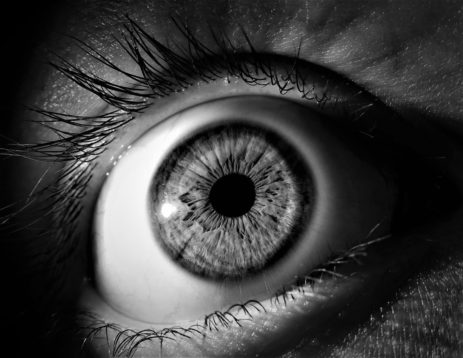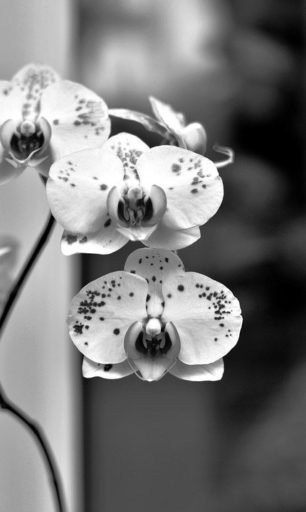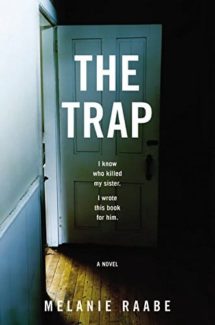The Spider Becomes the Fly
Author: Melanie Raabe
Linda Conrads’ house is the world. The east wing is the African Savannah, the west an evening in bustling Paris, her bed a metropolis of travel guides and glossy dreams. The walls that confine her body nurture her mind. Let the public say she is a reclusive author, a victim to a strange disease ten years in the making. She is free. At least, she was, until the earthquake of revelation when she sees that face again, the one of her sister’s murderer, beaming out at her from the television. Like that, the dream evaporates and the inescapable prison of what she has seen, what she knows, what she has been hiding from, returns.
Renowned globe-trotting reporter Victor Lenzen murdered Anna, Linda’s sister, and the only way she can tell the disbelieving world, the only way she can get real proof, is to set a trap the killer can’t resist. She’ll tell his story then, and Anna’s too, in her latest novel, Blood Sisters, a shocking departure from her normal works where fake names belie the real story of Linda and her sister and the killer who got away. And when she, the famous recluse, offers an exclusive interview only to Lenzen, he’ll come. That’s when she’ll close in. But the best laid traps are their own kind of artwork. And they take preparation.
The Trap begins with an engaging look at Linda, alone in her house yet free and adventurous in her mind. There is something of this life that appeals to the bookish recluse in me: beautiful mega-mansion, days free for reading and mental exploring, nights free for television and planning the next day’s dreams. It’s a beautiful, but weird introduction. We know that sadness underpins this grand hiding, and it isn’t long before Linda’s beautiful, fake world comes crashing down.
 The narrative provides explanation in bits and pieces, like a returning memory that has been feverishly, almost successfully buried. Once unearthed, though, it returns with bright, bloody vengeance in fragmented, uncontrollable spasms. Linda’s forced hiding has left her weak, unable to confront an unbelieving world, but memories of her sister, of that fateful staring eye looking out of a dead face encapsulated in blood, compels her to slowly start to overcome and plot. This bombshell premise, combined with the decaying beauty of a sequestered life, draws readers into the unfurling of an imaginative storyline where the killer lurks in a past that will not die.
The narrative provides explanation in bits and pieces, like a returning memory that has been feverishly, almost successfully buried. Once unearthed, though, it returns with bright, bloody vengeance in fragmented, uncontrollable spasms. Linda’s forced hiding has left her weak, unable to confront an unbelieving world, but memories of her sister, of that fateful staring eye looking out of a dead face encapsulated in blood, compels her to slowly start to overcome and plot. This bombshell premise, combined with the decaying beauty of a sequestered life, draws readers into the unfurling of an imaginative storyline where the killer lurks in a past that will not die.
Linda prepares and a part of this is the transformation of her own home. Wires and hidden cameras are installed. DNA experts consulted. A banquet laid for the big day. Glasses expertly polished, prime unblemished spots for fingerprints. An interrogator hired and lessons begun in psychological manipulation, torture to the breaking point of confession. Finally, the day dawns. Linda’s newly published book sits glossy on the table, her preparations so innocuously scattered about. The glasses that will catch finger prints. The messy food that will gather further DNA. As the story goes forward, Raabe intersperses portions of Linda’s novel alongside the escalating confusion, painting a picture all in fiction with the reader left to guess what is left out, what is unsaid, what is too painful to remember. But is the fly this spider is trying to catch the right one? What has ten years of solitude and lying to her own mind created in Linda, and is there a truth far darker than her memory? Whose breaking point will be reached: Lenzen’s or Linda’s?
Raabe’s novel is a slow burn, an addictive read built on psychological twists and turns and a tortured, unreliable narrator. The pull here isn’t so much emotional. Linda’s grief is more of a guilty obsession and her angst something relayed but no longer burning brightly. What captures us is the elegance of the scheme, the idea of a shut-away crafting an elaborate trap in her own home. Enter the ideas of DNA and the complexity of interrogation – a chapter that was all too brief, considering its import – and you have a compelling thriller atmosphere, layered in with a story equal parts mystery and revenge.
 The Trap isn’t 100% executed though, although its premise is most certainly unique and compelling. Readers would like such a grand idea (a truly perfect thriller/mystery idea) to be treated with the full care it deserves. A lot of the complexity of the trap and its setup is glossed over. The moments of preparation come and go and we want to hold on to them, to be part of crafting this puzzle that is zipping by while, simultaneously, the story slows, caught in time like Linda herself.
The Trap isn’t 100% executed though, although its premise is most certainly unique and compelling. Readers would like such a grand idea (a truly perfect thriller/mystery idea) to be treated with the full care it deserves. A lot of the complexity of the trap and its setup is glossed over. The moments of preparation come and go and we want to hold on to them, to be part of crafting this puzzle that is zipping by while, simultaneously, the story slows, caught in time like Linda herself.
The revelations escalate until Linda must leave her home for the first time in a decade and this is done without the brevity it deserves. Linda’s release to the real world is too easy and the conclusion the typical fare of a villain tell-all combined with last minute, near miss escape. Raabe throws in a strange love story, and voila, we have the answers to the riddle and a new chance at life for a revived Linda. It’s really the ending then, with all its stereotypical saves that brings the overall verve of the book to a halt and takes a great idea and ends it with the cut and paste flourish of your average Gone Girl rip-off thriller.
Still, despite the ending and the moments in the narrative where we speed past the more elegant details of Linda’s house snare, The Trap stands out as something different among the other thrillers and who-dunnits that clutter our collective bookshelves. It’s more the idea, really, than the execution, but that idea still shines. Linda’s locked away world, its odd escapist serenity, and the image of a woman coming back to life for justice tinged with revenge is titillating and worth following. Raabe has my attention, and I will try her books again.
– Frances Carden
Follow my reviews on Twitter at: https://twitter.com/xombie_mistress
Follow my reviews on Facebook at: https://www.facebook.com/FrancesReviews
[AMAZONPRODUCTS asin=”1455592900″]
- Book Vs Movie: The Shining - April 6, 2020
- Thankful For Great Cozy Mysteries - December 13, 2019
- Cozy Mysteries for a Perfect Fall - October 20, 2019



